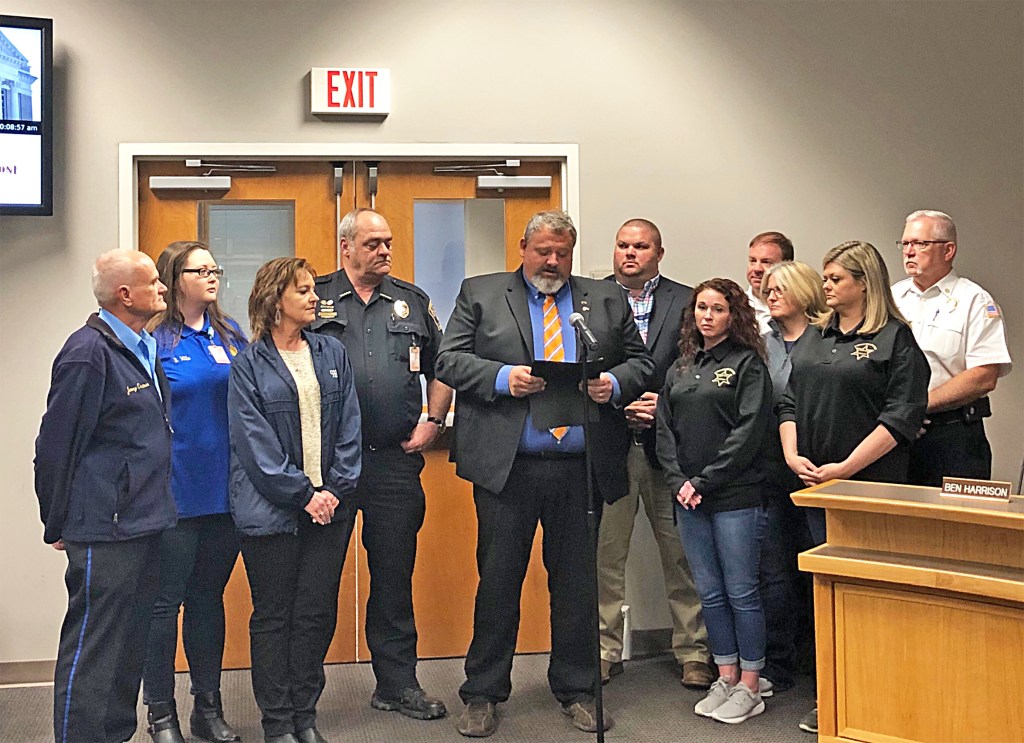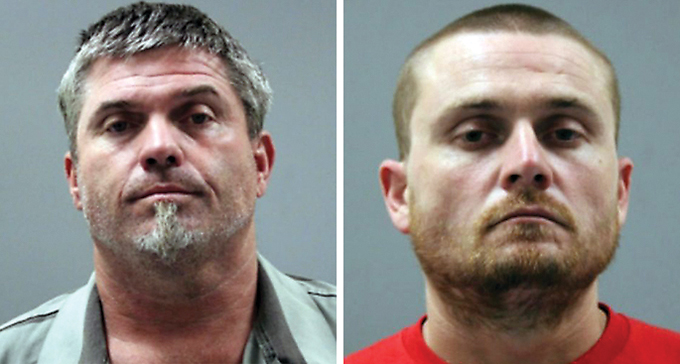Area telecommunicators honored this week
Published 6:15 am Thursday, April 18, 2019

- Limestone County Commission Chairman Collin Daly, center, reads a proclamation Monday recognizing April 15-19 as National Public Safety Telecommunicators Week. Daly is joined by dispatchers, police and fire personnel from Athens and Limestone County.
When an emergency happens, most people pick up the phone and dial 9-1-1. Some might not realize the person on the other end of the line is the first in a line of first responders working to provide the help needed.
Each year, the Limestone County Commission has worked to honor the men and women who answer those calls. Commission Chairman Colin Daly on Monday signed a proclamation recognizing April 15-19 as National Telecommunicators Week. The week honors those who dedicate their lives to serving the public. The dispatchers and public safety telecommunicators serve as a vital link between the community and fire, medical and law enforcement agencies.
Trending
Limestone E911 Director Brandon Wallace said communications officers are often unsung heroes. He said the women and men who answer the phone don’t get a lot of credit and sometimes none at all.
“They are heroes as well,” Wallace said, adding this week is a chance to draw attention to the men and women who work behind the scenes. Wallace said it’s a rewarding job that telecommunicators take very seriously.
“We don’t do it for attention or notoriety,” said Taylor Shores, a communications officer at Limestone County E911. “We do it because we love what we do and our community. As a whole, we enjoy being part of something bigger.”
In Limestone County, there are 47 telecommunicators between the Limestone County Sheriff’s Office, ambulance services like Athens-Limestone EMS, and the Athens and Ardmore police departments.
Know where you are
As Limestone County continues to grow, so does the need for services. Wallace said with a lot of people moving into the area, his biggest piece of advice is “know where you are.”
Trending
He encourages people to recognize landmarks and roadways because even with the latest technology, it makes finding someone in an emergency a whole lot easier. Plus, more people means places like E911 are a whole lot busier.
Wallace said location technology gets better by the month. The E911 center is continuously working to better its communications to get more precise location information.
Hard work
Shores said people don’t call when they are having the best day of their lives.
“They’re not calling with good news,” she said.
Some of the calls have happy endings, like the 12-year-old who was rescued Sunday after clinging to a branch in a fast-moving creek off Elm Street. Or, the 6-year-old Louisiana girl who dialed 9-1-1 when her mother was having a medical emergency while traveling through Alabama.
Others can be particularly tough.
Wallace said when called for, telecommunicators have opportunities to discuss incidents.
They handle situations in different ways. One might call a pastor, while another just needs to go outside for a breather.
“We do have critical incident stress debriefings,” Shores said. “It’s a matter of personal preference. We are not forced to do it.”
Shores and Wallace said they rarely get the backside of a story once responders arrive, but sometimes they need to know the rest of the story for their own closure.
Telecommunicators reclassification
There is currently national legislation, known as the 9-1-1 SAVES Act, in the U.S. Congress that would reclassify the work public safety communicators do as protective services occupations as opposed to administrative and clerical classifications.
If the the act passes, telecommunicators would be classified as first responders and could receive hazard pay like police and fire employees.
State changes
Wallace said the state is also going through big changes. Last year, he was appointed by Gov. Kay Ivey to the Alabama 9-1-1 Board.
Wallace said the state is currently building a 911 network. The Alabama Next Generation Emergency Network is an ongoing, statewide project aimed at improving emergency services. The network will allow the 911 centers to manage their own network. Wallace said if one center in the state is overwhelmed due to a manmade or natural disaster, another center could help.
The network will also let telecommunicators receive pictures and video from a scene in real time, according to Wallace.





